There’s more than one way to build a Commander deck. Personally, I make a Commander deck the same way I try to find something in a data set: I create the universe of potential cards that would be interesting to play in that deck, and then I slice down from there. In the beginning, that process is pretty easy. Sure, you have to think about your cards, figure out the potential themes that each card could support, and then make a decision about which themes to adopt and which themes to abandon. But once you’ve stripped away all the off-theme chaff, you’re generally left with a lot of powerful cards. Then the decisions often turn agonizing.
Now, normally I don’t choose submissions that are over 99 cards plus a Commander. This week, though, I made an exception. This week’s submission is interesting because it contains gods and lepers. There are a bunch of cards typically seen in more expensive Constructed formats being balanced out by some cards I personally would consider too weak to play in this sort of deck. That’s not to say it was a bad deck, mind you! As these things go, it was a block of a fairly nice sort of marble. But there was room for improvement, and I took that opportunity and ran with it.
So, without further ado, take it away Justin!
Dear Azami,
My friends and I are starting a commander league. Where I would like to be as competitive as I can be, I know they will be. I am having troubles trimming it down to 99+1. Here is what I have so far:
Commander: Prime Speaker Zegana
Hornet Queen
Avenger of Zendikar
Predator Ooze
Reef Worm
Merfolk Sovereign
Craterhoof Behemoth
Consecrated Sphinx
Spore Frog
Master of the Pearl Trident
Thassa, God of the Sea
Scavenging Ooze
Prophet of Kruphix
Elvish Piper
Simic Sky Swallower
Experiment Kraj
Edric, Spymaster of Trest
Stormtide Leviathan
Hornet Nest
Gilder Bairn
Mistcutter Hydra
Kalonian Hydra
Acidic Slime
Ancient Ooze
Voyaging Satyr
Nylea, God of the Hunt
Murkfiend Liege
Diluvian Primordial
Dissipate
Krosan Grip
Plummet
Tooth and Nail
Deprive
Cyclonic Rift
Life from the Loam
Plasm Capture
Overrun
Beastmaster Ascension
Mystic Genesis
Unexpected Results
Call of the Wild
Naturalize
Praetor’s Counsel
Negate
Aqueous Form
Dissolve
Rite of Replication
Aether Gale
Counterspell
Incremental Growth
Primeval Bounty
Cancel
Hardened Scales
Traumatize
Shredding Winds
Grounded
Spell Rupture
Cultivate
Explosive Vegetation
Disperse
Kodama’s Reach
Gleeful Sabotage
Force of Will
Defense of the Heart
Soul’s Majesty
Akroma’s Memorial
Hero’s Blade
Grafdigger’s Cage
Tormod’s Crypt
Isochron Scepter
Gilded Lotus
Elixir of Immortality
Whispersilk Cloak
Sol Ring
Burnished Hart
Garruk, Caller of Beasts
Garruk, Primal Hunter
Kiora, the Crashing Wave
Freyalise, Llanowar’s Fury
Simic Growth Chamber
Reliquary Tower
Wasteland
Arcane Lighthouse
Tropical Island
Hinterland Harbor
Evolving Wilds
Simic Guildgate
Breeding Pool
Command Tower
Misty Rainforest
Oran-Rief, the Vastwood
Strip Mine
Temple of Mystery
Flooded Grove
Thornwood Falls
12 Forest
9 Islands
Please help. Thank you for your thoughts and ideas ahead of time.
Justin Bentley
The first thing I noticed in Justin’s deck was Force of Will. The second thing I noticed was Traumatize. Third was Master of the Pearl Trident. These three cards are all blue, and two of them see play together from time to time, but there’s no consistent game plan across these three cards. Traumatize is clearly the odd one out, but Master of the Pearl Trident is (presumably) included to give you a way to kill a blue opponent with commander damage, and Force of Will is generally not the best at protecting a Commander.
Here’s my thinking on that unintuitive statement. Basically, if you’re relying on Force of Will against any control deck, they’re going to be able to engage with you in a protracted counterspell battle, and those are generally won on the back of card advantage. Force of Will is negative card advantage. Against other decks you can halt the first kill spell, but someone – maybe even that same player – will have another one. They can push through that one Force of Will without even going down on cards.
So, while Force of Will is amazing (and important) in Legacy and Vintage, where it’s a must-have hedge against a lot of the nastier combo decks, in Commander it’s more of a “break in case of emergency”-type card. It’s a snare, not a shield.
Anyway, it seemed like the deck was struggling to find a theme, using Prime Speaker Zegana as a draw engine, but without giving her the critical mass of creatures she needs for her ability to be cost-effective in that role. Here’s what that ended up looking like.
Counters Don’t Matter
Out:

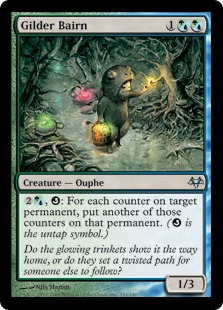
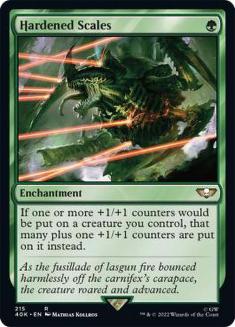
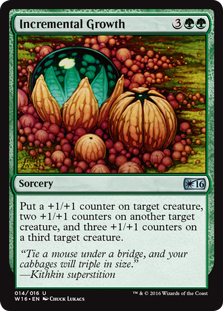
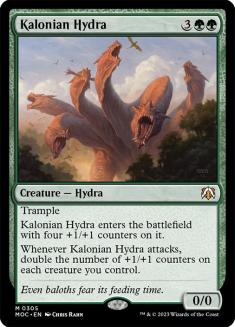
Kept:
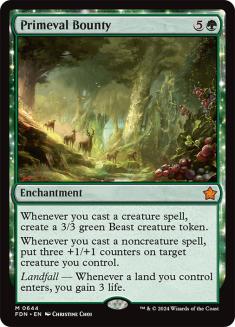
In:
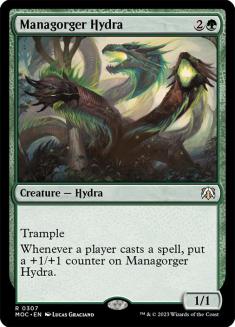
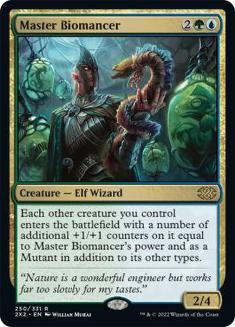
First, I largely ripped out the synergies between +1/+1 counters and Prime Speaker Zegana. In the right deck Gilder Bairn is an amazing card, but those decks tend to be Doubling Season decks. As such, it has a higher threat profile than one would expect, leading to it being either quickly killed or, barring that, painting you as a target. It’s also a slow card, requiring that you untap with it to use its ability, and then further requiring an attack or other means of tapping it to use the untap ability. It would be a stronger card were that ability a tap one, and I think even that version would be a candidate for a cut in a deck like this.
Kalonian Hydra occupies a very similar space to Gilder Bairn. In the right deck it’s an all-star, but this isn’t really that deck. The counters here are somewhat ancillary, and unless you’re shooting for a commander kill (which is probably the least interesting way to use Zegana), doubling the Prime Speaker’s counters upon attack seems somewhat of a waste. If you want her counters to be doubled, the time to do that is when she enters the battlefield, and neither Kalonian Hydra nor Gilder Bairn excels at that because of their need to turn sideways to trigger.
Harden Scales means Zegana draws you an extra card, but it does nothing to actually affect the battlefield so it seemed like a solid cut. Incremental Growth is borderline in Commander, and not really all that good outside of a deck that’s leaning on the counter lords from Tarkir. Finally, Experiment Kraj felt a little odd. If you had a lot of activated abilities to count on, maybe it would be useful, but as-is you’d have to rely on your opponents’ permanents to get the best effect out of the experimental Ooze. That seems less than ideal, especially in a six-drop that has to overcome summoning sickness before it can even get to work.
I did keep in Primeval Bounty, though. It has some relevance as a “counters matter” card since it adds a permanent Giant Growth to each of your noncreature spells, but I like it more for its utility post-Wrath of God. Normally, if you need to rebuild your hand after the board’s been wiped, you’re stuck with a tiny Prime Speaker Zegana unless you spend mana first to play another creature. Primeval Bounty ensures that Zegana will always enter the battlefield as a 4/4 at least, and that’s actually pretty useful in a deck like this.
Then I added Managorger Hydra and Master Biomancer. They’re both good at ensuring you have a big Zegana: Managorger Hydra drops early and grows quickly while Master Biomancer makes the rest of your team larger and then ensures that Prime Speaker Zegana draws you even more cards.
And at the end of the day, drawing cards is what Prime Speaker Zegana loves to do.
No More Counterspell Battles
Out:
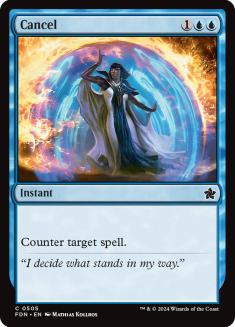

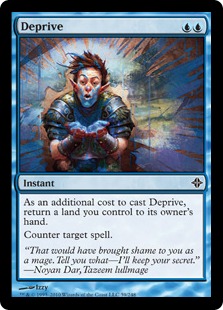
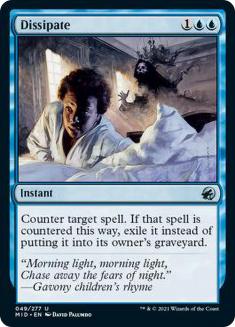
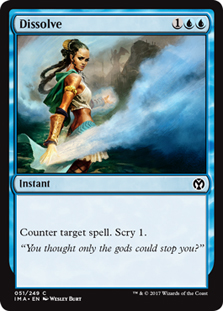

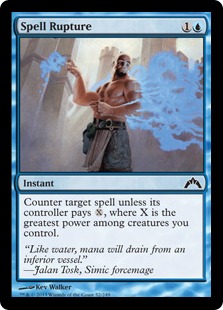
Kept:
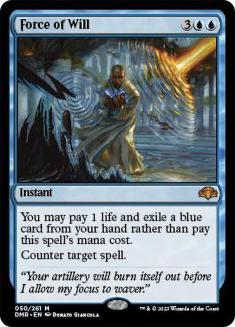
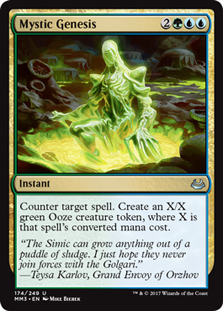
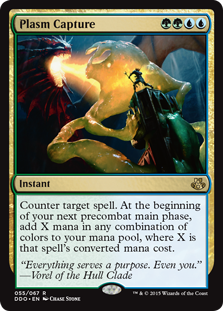
Added:
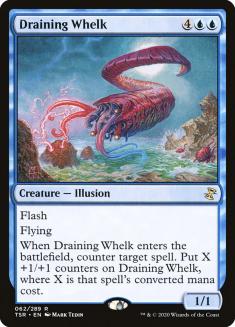
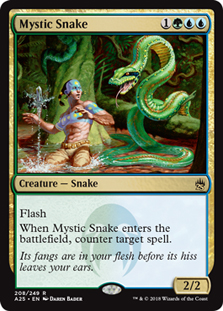
I also went though the counterspell suite and made some changes. I’m not a huge fan of counterspells in Commander since I think they’re a bit too reactive, but there are certainly decks that can use them to great effect. Still, there was a lack of specificity in the initial list, with ten different counterspells of varying power levels. Looking at it, I decided I wanted to cut some of those back while keeping some counters available to face what sounds like a somewhat Spikey metagame.
Prime Speaker Zegana requires bodies on the field in order to draw enough cards to make her worthwhile. For this reason, I wanted to cut most of the counters that were board-neutral. Cancel, Counterspell, Deprive, Dissipate, and Dissolve are all basically the same card, each with some ancillary benefit that could make the most of them in the right context. I say most of them because Cancel is the counterspell I least expect to see in Commander decks; each of the other four counterspells listed above beats Cancel out on at least one axis. Counterspell beats Cancel on cost, Deprive beats Cancel on cost and land enabling, Dissipate beats Cancel through its exile clause, Dissolve beats Cancel through the scry, and there are several other spells that do basically the same thing as Cancel but with different bells and whistles. Given the wide variety of options, I generally feel good cutting Cancel; here, I felt comfortable cutting all of them.
I kept Force of Will because despite the fact that I don’t feel like it’s a great protection spell, it’s certainly useful in the right context. That context, for the record, is the moment someone else tries to stop the combo player from going off, the combo player smugly mugs as he or she responds with a counterspell (let’s say Last Word), and you can be like, “ha, I Force your victory!” I don’t generally play Force of Will in Commander, but that’s basically when I picture it being best.
Mystic Genesis and Plasm Capture are both on the pricier side of things, but there are two elements that made me keep them in. First is that they’re Simic spells, and I’m a firm believer in using color-identity-restricted cards as often as possible. Second is that they both have ancillary benefits that really help out in a Zegana deck. Plasm Capture ramps you while approximating the heady feeling of playing Mana Drain in Vintage, while Mystic Genesis leaves you with a potentially large body to pump your Zegana when she hits the field.
In addition, I wanted to bring in two more strong counterspells, or at least counters that are strong when paired with Zegana. Mystic Snake and Draining Whelk both leave a body after they counter the spell, and that’s really useful. That Draining Whelk will end up bigger than Mystic Genesis’s Ooze token when countering the same spell is also a consideration, but in general the goal was to keep your counters advancing the board state, which these do.
Different Types Of Cheating
Out:
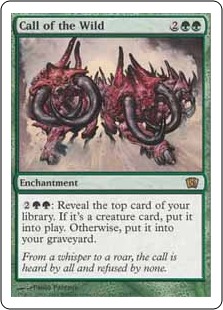
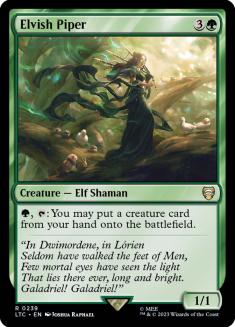
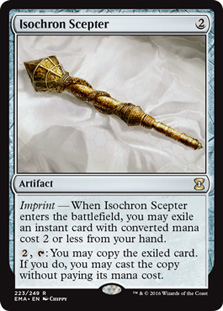
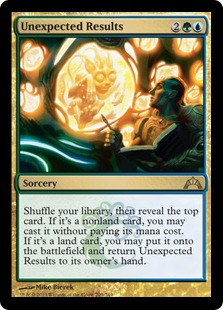
Kept:

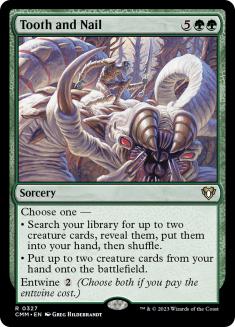
Added:
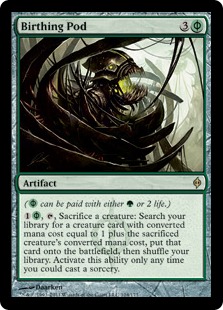
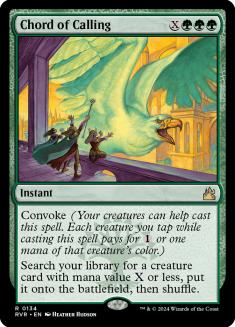
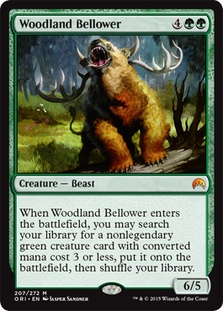
Cheaters can be a lot of fun in Commander. No, I’m not talking about people who cheat, because cheating at something like Commander really is just a waste of everyone’s time. What I mean when I say “cheaters” are the cards that fundamentally alter a basic rule of the game. Usually, that rule is either “you must play cards from your hand” or “you must pay mana for your spells.”
In the right deck, Call of the Wild does both of these things, offering a mana discount to play a creature off the top of your library. Unfortunately, Call of the Wild requires you have some control over the top of your library and that you have a high ratio of creature spells, neither of which seems to be true about this deck. If you were playing Oracle of Mul Daya or Future Sight, then it would be a solid card, but you’re not, nor should you be.
While Elvish Piper is powerful, it’s slow. You have to untap with it to use its ability, and it’s fragile to boot. You can’t rely on a card like that. Similarly unreliable, Unexpected Results can be fun at times. In many decks, it’s going to have no blanks. This is not one of those decks. With five counterspells in the deck you have the chance to critically fail when you roll a one. That’s less than ideal.
Finally, there’s Isochron Scepter. It’s a powerful card, but you had precious few spells to imprint upon it. Cards like Cyclonic Rift and Deprive are better off without a Scepter, and that really left some of your anti-air removal spells or your situational counterspells as the most likely things to end up imprinted. That’s a recipe for a dead slot, so I cut it.
While I personally find these two cards somewhat annoying, I kept in Defense of the Heart and Tooth and Nail. Tooth and Nail is irritating because of all the “I win” combos that it can fetch up; since your meta sounded heavier on the Spikes, I kept this in, and would advise that you consider searching up Avenger of Zendikar and Craterhoof Behemoth. Or with Defense of the Heart, since it is basically a cheaper version of the same card.
I added in a couple of fun cards to round out this section. I considered Green Sun’s Zenith because I have fond memories of that card in many a format, but in the end I went with Chord of Calling. There are enough blue creatures in the deck to make it worth paying two extra mana, and the ability to do it at instant speed means that Chord of Calling acts as a backup (if expensive) counterspell.
Woodland Bellower doesn’t have a ton of targets, but it looks like it’s fun to play with so I added it in. As-is, it can still get you a number of different utility cards, although it can’t tutor up my personal favorite: Edric, Spymaster of Trest.
Side note: I am quite curious as to why the nonlegendary clause is on that card. I wonder what the broken combo was to add that restriction. I get requiring that the creature be green, but nonlegendary is not a common limitation. There are only eight cards that have that wording, and two of them were printed in Magic Origins. It’s interesting.
Finally, there’s Birthing Pod. Good news, everyone! Now that it’s banned in Modern and only seeing rare play in some Legacy Nic Fit builds, they have come down to a reasonable price. This means that finally Commander players can get plentiful copies of a card that seems tailor-made for our format. While you don’t have any one-drops in the final build, the rest of the chain gives you plenty of non-combo options (even if you could still theoretically go from Avenger of Zendikar to Craterhoof Behemoth).
Creature Up The Ramp
Out:
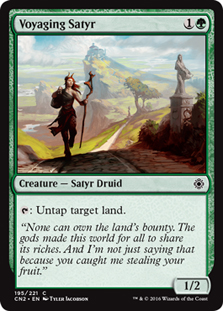
Kept:
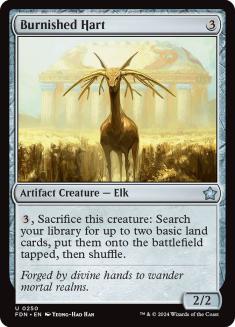
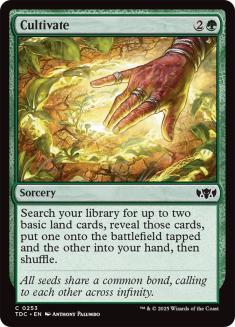
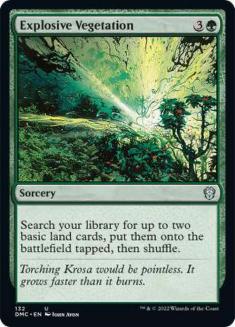
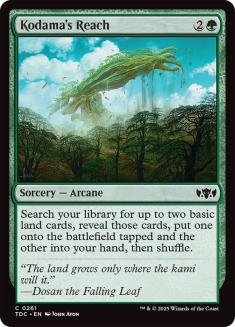
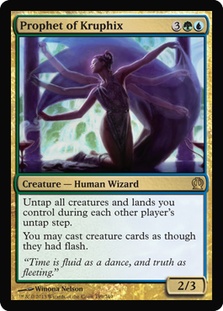
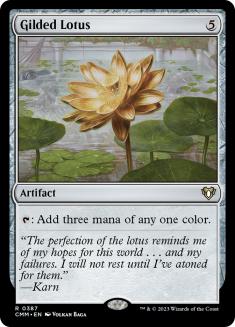
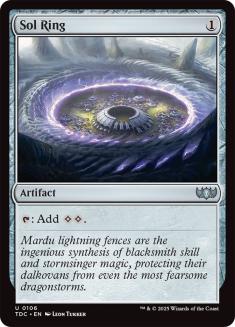
Added:
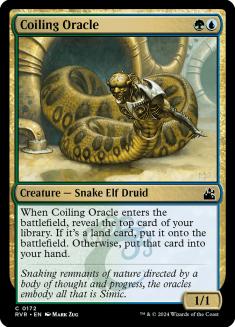
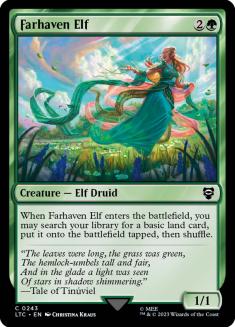
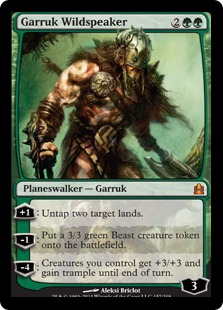
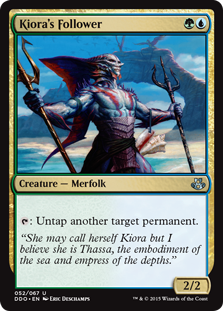
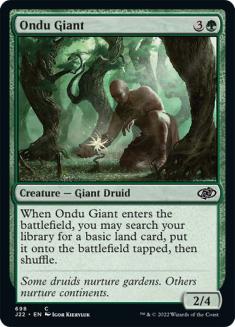
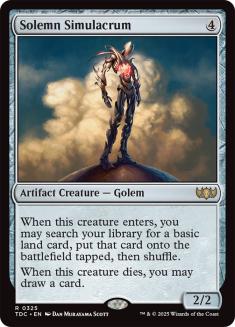
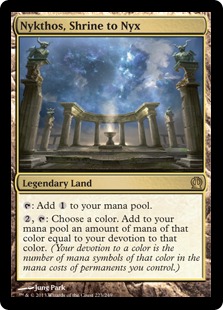
If anything, I thought your initial list was light on ramp options. The best part of playing Simic is that you have the ramp to go along with the draw, allowing you to draw all the cards and then do most of the things. While you had some of the best ramp spells in the game, specifically Cultivate, Kodama’s Reach, and Explosive Vegetation, I really thought you wanted more of these cards to be creatures.
So I brought in the creatures that have Rampant Growth tacked to them. Solemn Simulacrum is a Commander all-star, and should really take the place of Sol Ring in all future Commander preconstructed decks. Farhaven Elf and Coiling Oracle are both capable of being tutored up by Woodland Bellower, which is one of the reasons I liked bringing that card in. Ondu Giant is a bit rarer to see, but I like it. A disposable 2/4 does a tremendous amount of work on defense, and since it’s already shot its wad you’re not going down in card advantage.
Fun fact: “shot your wad” was not initially a sexual reference. It refers to firing off a muzzle-loading musket or cannon without properly packing in your ammunition. Typically, those weapons were loaded by pouring in a quantity of black powder, then sticking in a wad of cotton to separate the projectile from the propellant. Then the ammo would be put in, jammed down against the cotton, and fired. If you forgot to do the last step, say due to facing down a suicidal charge of pro-slavery seditionists, you’d end up shooting out an ineffectual wad of cotton. Thus, you’d have “shot your wad.” Unfortunately, time has moved us more towards the sexual expression, since the modern meaning of the phrase is to spend your charge. Still, the more you know!
Garruk Wildspeaker is one of those cards that tends to do more than its reasons for inclusion. Generally, he’s included either to be a ramp spell or an Overrun. Since I cut Overrun, this seemed like the perfect type of card to add in. But even his Beasts are relevant. Drawing four cards off Zegana is basically the bottom end of where you want to be, and the Beasts enable that without having to spend mana.
Finally, I switched out Voyaging Satyr for Kiora’s Follower. Kiora’s Follower is a bit harder to cast on turn two, but the added flexibility of being able to untap your creatures and artifacts more than makes up for that. Kiora’s Follower plus Sol Ring or Gilded Lotus is a definite upgrade to Voyaging Satyr. I also brought in Nykthos, Shrine to Nyx, because what’s the point of being able to untap your lands if you can’t completely abuse that ability?
Removal With Bodies
Out:
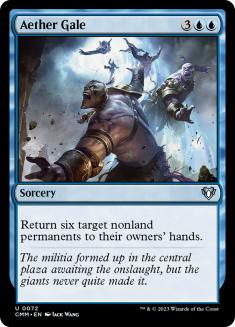
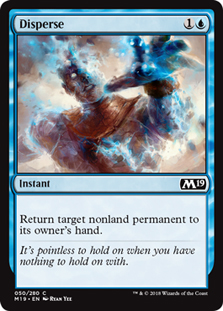
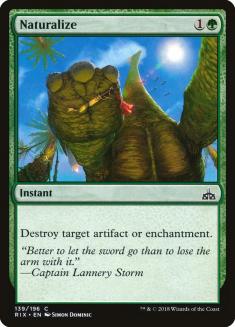
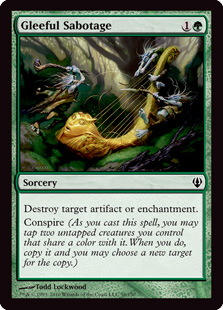
Kept:

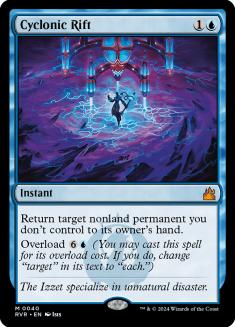

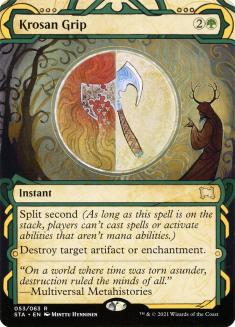
Added:

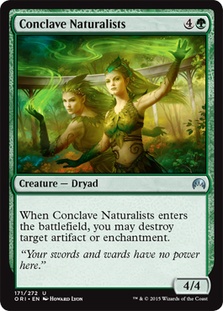
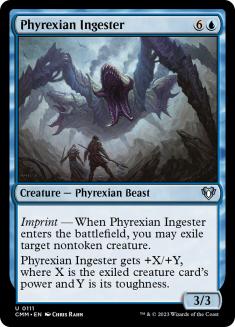
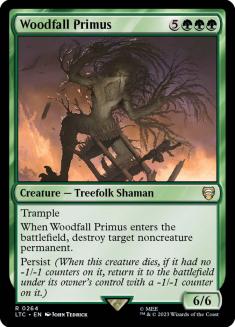
Aether Gale is the blue Hex. How you feel about that Hex will probably predict your feelings about Aether Gale. Now, I’m not a fan. I had some feel-bad moments when Sylvan Primordial was legal because I needed to choose more targets than I wanted, and that’s my general impression of the “remove six” cards. Since you need the full six targets to cast the spell, it’s a recipe for the bad feels.
Disperse has the opposite problem. As a one-for-one bounce spell, it’s weak in a card advantage format. Naturalize and Gleeful Sabotage both share this problem, although at least Gleeful Sabotage mitigates it a bit through its conspire ability. Still, if you’re playing a sorcery-speed Naturalize in Commander it should be tied to a body, and that goes double for commanders like Prime Speaker Zegana.
That’s why I kept Acidic Slime and then added in Brutalizer Exarch, Conclave Naturalists, and Woodfall Primus. Each one comes attached to a relevant body, which is good, since Prime Speaker Zegana really requires you keep some power on the board at all times. Each has ancillary benefits as well, from Acidic Slime’s deathtouch, the relevant 4/4 body of Conclave Naturalists, to the sheer versatility of Brutalizer Exarch. I kept in Krosan Grip because it seemed you were worried about counter wars in your original build, and while Krosan Grip is more counterable now than ever (thanks, Morph Block!), it’s still pretty hard to stop.
I also kept in Cyclonic Rift; while I think that card is unpleasant, it’s very, very good. If your friends are looking to play more casually, I would cut this down the line, but if you’re facing down some serious opposition it will help you. Just remember the ideal time to cast an overloaded Cyclonic Rift is the end step prior to the start of your turn. It is very much not a sorcery-speed card.
I kept Freyalise, because she’s ramp and a Naturalize with an Ultimate that draws cards. She’s solid, and in many ways she’s my favorite planeswalker from the last round of Commander precons. I also brought in Phyrexian Ingester, which is a great blue removal creature in any deck but will excel in a Prime Speaker Zegana build. Even if you have to eat a Wall or somebody’s Commander and thus getting robbed on the Imprint, you’re still ending up with at least four cards off the subsequent Zegana, and that’s solid.
Ancillary Draw Options
Out:
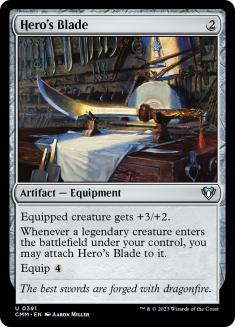
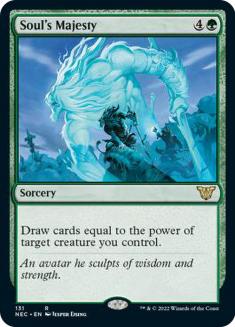
Kept:
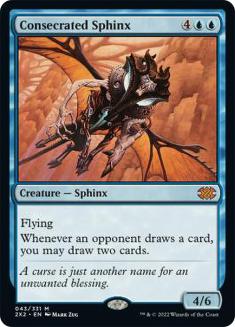
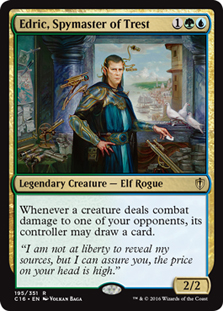
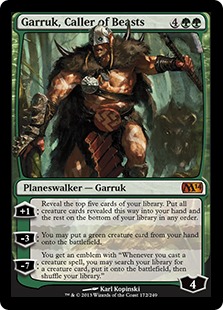
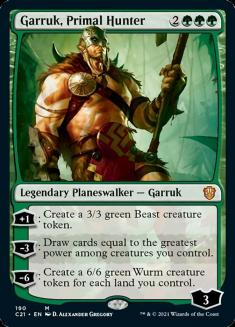
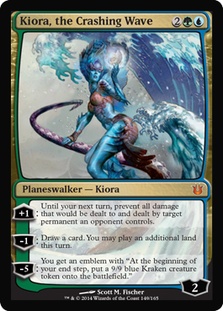
Added:
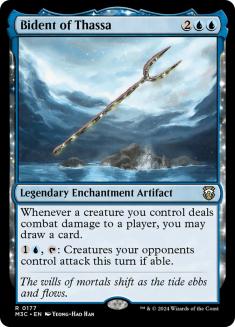
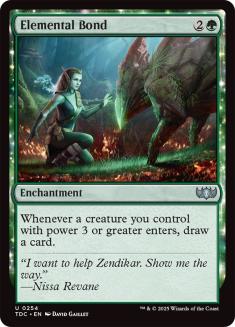
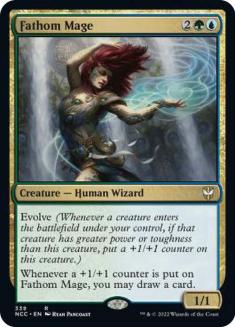
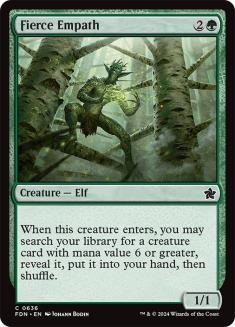
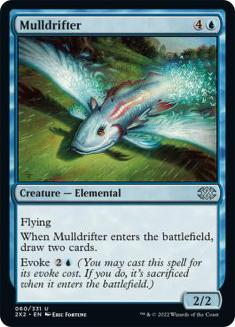
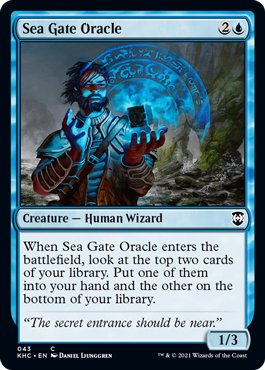
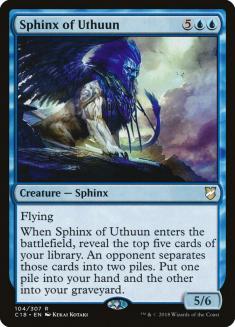
This may not sound genuine, but let me assure you I mean it: that’s a cute synergy between Hero’s Blade and Prime Speaker Zegana. In the right deck, I think that could be a solid role-player. The problem is that this is not that deck. You’re running basically three to five legendary creatures, and the equip cost is a bit much for the rest of your team. That’s why I cut it, but I wanted to highlight it because I do think it’s neat, and I hadn’t thought of it before seeing your list.
In a deck like Zegana, if you are drawing cards off a spell and not a creature, you want that spell to function on an empty board. Soul’s Majesty doesn’t do so well by that metric. It’s costly, slow, and situational, so I cut it.
I kept some of the individually solid cards, though. Consecrated Sphinx draws aggro, but I always found the irritating problem with running it was when you had to face down another, and then you and the other player end up basically drawing your decks. That’s why they banned Trade Secrets, right after putting it in the first Commander precons, amusingly enough. Since people have stopped playing them in every blue deck, though, it doesn’t feed that sort of negative loop. Well, unless your opponent has a Clone. Which blue opponents will often have. So it’s less than ideal, but you seem to be facing down a powerful metagame, so have at it.
Edric, Spymaster of Trest is my favorite Simic commander. Personally, I think he’s more interesting than Prime Speaker Zegana, but she incentivizes you more towards beef while he thrives on situational cards like Augury Owl. Plus, you’re happy when they kill Zegana, and it sucks when they kill Edric. So in the metagame I’m imagining, I get your decision. Still, you don’t have to choose… you can play both!
Garruks are good. Both of these Garruks have draw functions, which is nice, though their real power lies on a different axis. They tend to protect themselves rather well, and they both have fairly backbreaking Ultimates. Keep them!
The same basically goes for Kiora, the Crashing Wave. You can use her plus ability politically, though it’s her minus ability that shines, being as it’s Explore on a planeswalker. If you can get her to Ultimate, that’s a pretty brutal situation for your opponents but it takes long enough that you might not be the recipient of immediate aggro upon playing her.
I brought in a bunch of relevant creatures with draw functions. Fierce Empath is a creature tutor, Fathom Mage grows and draws at the same time, Mulldrifter and Sea Gate Oracle both let you see the top two cards of your library, and Sphinx of Uthuun is a beefy, flying version of Fact or Fiction. They’re all strong additions to the team.
Finally, I brought in two enchantments. Bident of Thassa is a little more fragile than most enchantments, but it more than makes up for it by being both a draw engine and a way to provoke action on a crowded board. Elemental Bond doesn’t have that versatility, but it makes up for that in resilience and in triggering off of most of the creatures and planeswalkers in the deck. I’m really excited to play with that card some more, and I imagine you are as well.
Reduce The Beef Intake
Out:
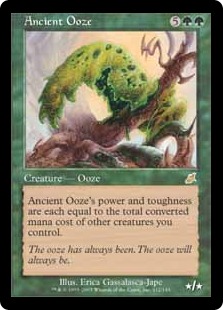
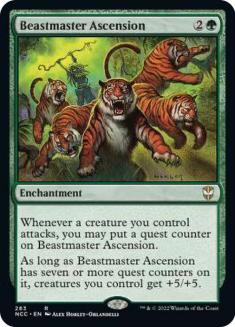
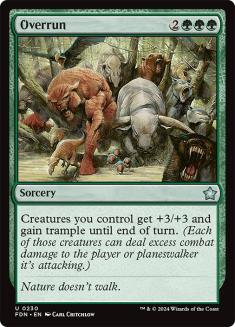
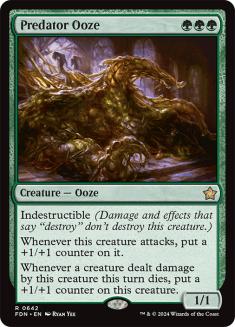
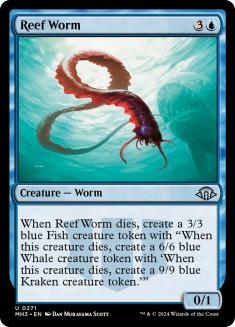
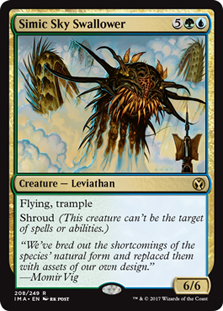
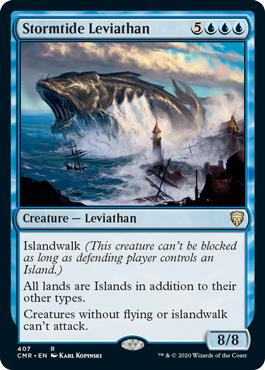
Kept:
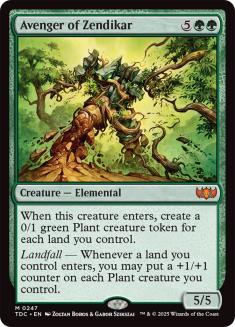
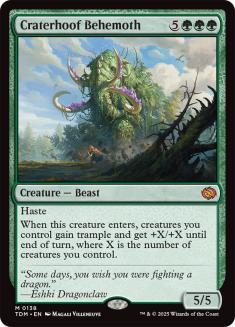
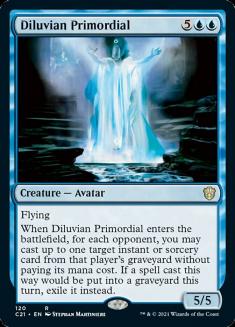
When you’re drawing a lot of cards, you don’t need as many whose main feature is that they are big, become big, or help someone else get big. You can find big cards that do things, and when you do, something gigantic isn’t going to have the same force behind it.
This is why I cut Beastmaster’s Ascension and Overrun, although for the latter it’s why I thought to bring in Garruk Wildspeaker, which should leave you rather neutral on Overrun effects. Reef Worm is a fun card, but you have no real sacrifice options and it’s slow if you can’t control when the Kraken eats the Whale that eats the Fish that eats the Worm. Simic Sky Swallower has been outclassed a lot in the last few years, ever since hexproof became a thing. Since there are a couple of situations where you’d want to target your own creatures, and since frankly it’s a boring zeppelin, it’s cut. Stormtide Leviathan was interesting, since Prime Speaker Zegana doesn’t fly or have islandwalk. I like it in some decks, but not this one.
Finally, there’s Ancient Ooze. This card is so high variance as to be completely unreliable. Sure, sometimes it’s going to mean you draw like twenty cards off your Prime Speaker Zegana trigger, but is that even useful? There is such a thing as drawing too many cards at once. It definitely slows the game down to a crawl while you figure out how those cards all interact with the board. Maybe it’d be okay if it were a low-drop, but it’s not. It’s a win-more card in every sense of the term, highlighted most cleanly in the power and toughness. Tarmogoyf is a */*+1 for a reason. A seven-drop you can’t even cast unless you have nontoken creatures on the board is not where you want to be. If you really want an out of control large creature, Multani, Maro Sorcerer is more where you want to be… but I don’t think that’s particularly fun either, so I didn’t add it.
As mentioned above, Avenger of Zendikar and Craterhoof Behemoth are good friends, whether defending the heart or toothing the nail. Diluvian Primordial is a shadow of its green counterpart, but it’s got a good body and generally lets you case one or two removal spells when it comes into play so I think it’s a strong inclusion. Still, Sylvan Primordial was so close to the ideal primordial; had it been a “may” trigger, I think we’d still see it around Commander tables from time to time.
Increase the Tofu Intake
Kept:
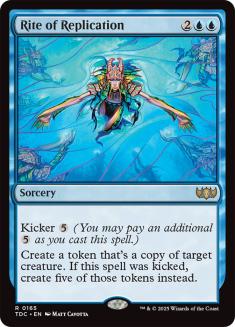
Added:
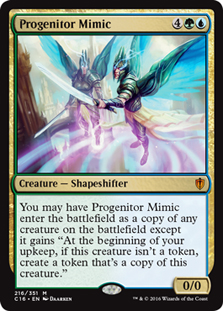
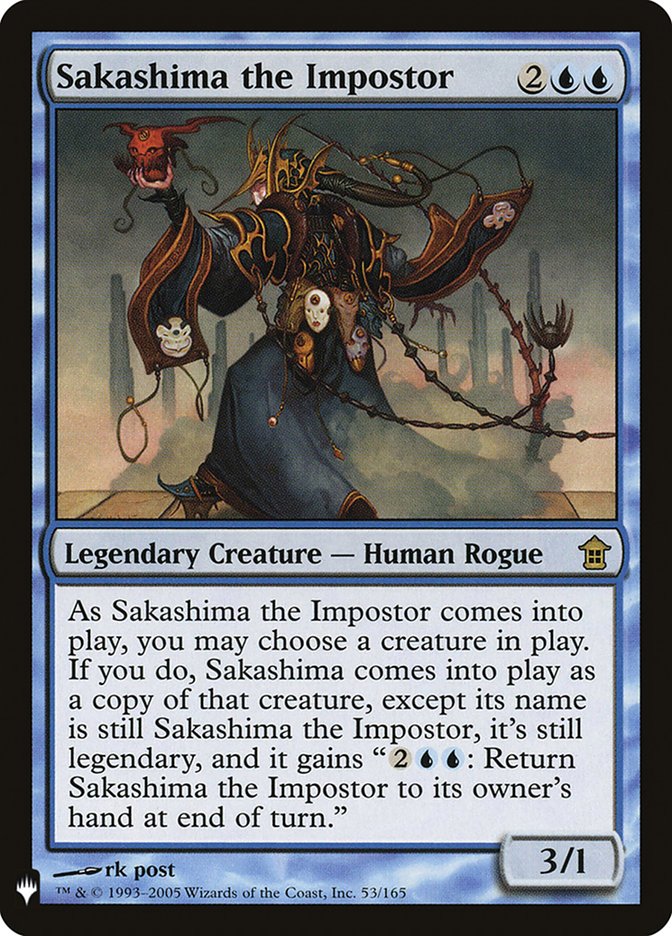
This is not to say I’m totally against finishers, I just think it’s usually better to play a Clone than a trenta French vanilla creature. Rite of Replication, which will occasionally make for an amusing math problem, is a solid Commander mainstay. I’ve cut it from a fair number of decks over the years because it gets a little boring after a while, but it’s definitely worth experiencing the glee that comes from getting, say, five new Sphinx of Uthuuns.
I brought in two of my favorite Clones, Progenitor Mimic and Sakashima, the Imposter. What I love about them both is that they offer a string of enters-the-battlefield triggers. Progenitor Mimic gives you a bonus creature every time you untap, while Sakashima can be bounced and replayed in response to removal, or even ennui. The best thing about Sakashima, though, is that it can copy Prime Speaker Zegana, allowing you to have two versions of her on the board at once. Seems pretty powerful to me!
Use The Graveyard
Out:
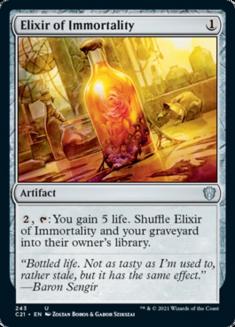
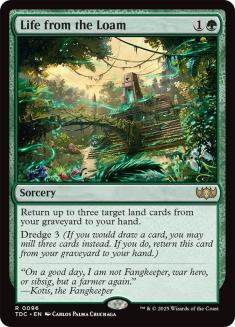
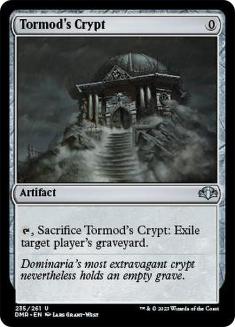
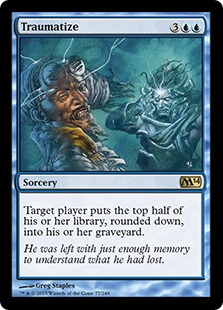
Kept:
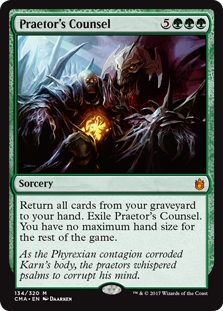

Added:

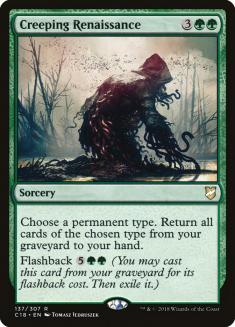
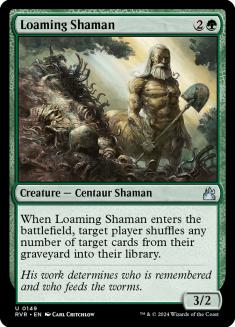
I really don’t get the Traumatize. I was similarly confused by Life from the Loam, though. You were running Wasteland, Misty Rainforest, and Evolving Wilds, which is hardly enough cards to expect to be able to regularly recur it, and your deck lacks significant ways to use your graveyard as a resource. Maybe if you were using Lhurgoyf and brethren to power up Prime Speaker Zegana I could understand why you’d want to be dredging, but that’s not your plan. Anyway, that’s why I cut it.
Elixir of Immortality and Tormod’s Crypt aren’t bad, but they’re also rather weak in Commander. Five life just isn’t as much in Commander as it is in Standard, and you’re rarely in danger of decking yourself. And Tormod’s Crypt does one thing really well, but it’s something that Scavenging Ooze does better in many ways. If I wanted to run an artifact answer to graveyard shenanigans, I basically choose Relic of Progenitus unless I’m relying heavily on the graveyard, which you’re not. Tormod’s Crypt is weak outside of decks where it’s not relevant that it’s a zero-cost artifact.
Praetor’s Counsel, though, is a strong card. It’s the type of thing you don’t want Fork-ed or Commandeer-ed. It’s relevant that it draws you a bunch of cards, it’s relevant that it banishes hand size restrictions, and it’s even relevant that it’s a nonblue draw spell (although this last part isn’t very relevant). Since I liked it so much, I also brought in Creeping Renaissance, its slightly less powerful friend. Creeping Renaissance is below the radar for a lot of people, but in some ways it outperforms Praetor’s Counsel, usually in the form of a reduced threat profile.
Loaming Shaman and Bow of Nylea both do the Elixir of Immortality thing, but they have different benefits. With Loaming Shaman, the benefit is that it’s a reasonable body for the price and it can be used offensively or defensively, as a scalpel or a shotgun. With Bow of Nylea, the benefit is its four other abilities, which include pseudo-evasion, aerial removal, +1/+1 counters, and lifegain. Those are all things your deck wants to be doing.
Lose The Evasion
Out:
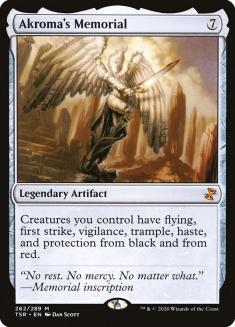
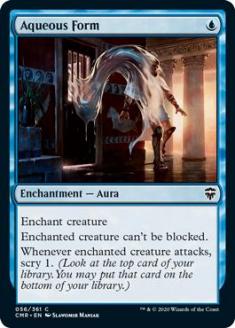
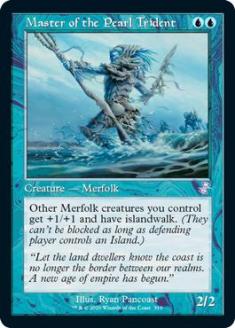
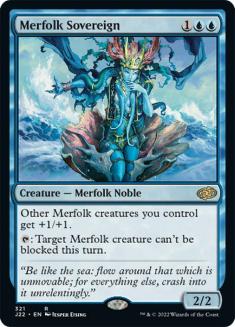
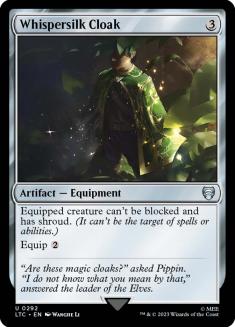
In:
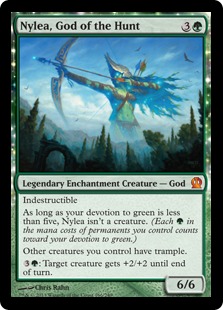
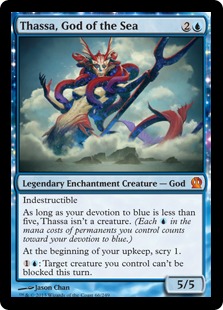
People tend to be wary of evasive commanders. If there’s the chance you’re going to get wiped out of a game in two or three turns, you’re going to focus fire on the threat. That’s not really what any Commander player wants. Unlike Archenemy, in Commander when the table’s against you it’s usually a sign you’re going down. People get twitchy if they’re the only one with an Island out when you drop Master of the Pearl Trident, or are a Rakdos deck when you drop Akroma’s Memorial. If you had a broader Merfolk theme it would be less threatening, but when you’re not specifically doing the Tribal thing and then drop a card that clearly gives your commander evasion, that’s a “kill it with fire” scenario.
For the record, a Simic Merfolk deck with Prime Speaker Zegana as the commander sounds like a lot of fun. This build is probably more competitive though, even if it lacks the joy of belonging to a tribe.
Whispersilk Cloak is particularly threatening, especially with a commander like Zegana who can kill fairly quickly. I don’t like it for that reason, but I also don’t like it specifically in this context. Prime Speaker Zegana is like Maelstrom Wanderer in that the worst thing your opponents can do is not kill it. You want her to be dead from time to time, because that’s how you refill your hand. Making it harder to kill her puts you in a position where you can run out of gas before she finishes off your opponent, and that’s a recipe for losing in a kill-or-be-killed situation.
Nylea, God of the Hunt is evasion in that trample is the unsung evasive ability, particularly for large creatures like Prime Speaker Zegana. I like her because she makes combat math nightmarish for your opponents and can even be used on an opponent’s creatures. That gives you political options, and it sometime just lets you kill things. If one of your opponents chump-blocks another opponent’s attack, you might just be able to pump the blocker and take them both out.
Thassa, God of the Sea is brutal in Commander. Need I say more? Okay, fine. She smoothes out your draw, draws fairly little aggro since she just sits there until she kills someone, and on top of that she does the aforementioned “kill them” thing. She’s a good card. Shame she’s not a Merfolk God.
The Best Defense
Out:
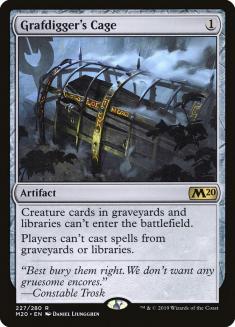
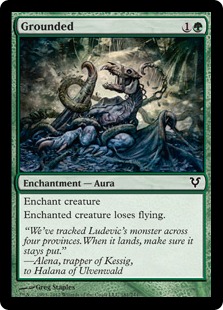
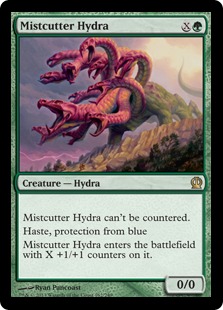
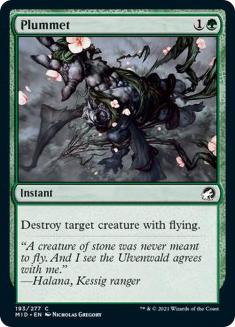
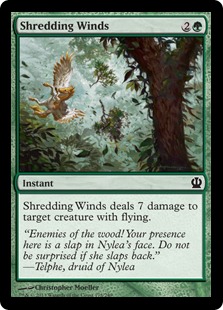
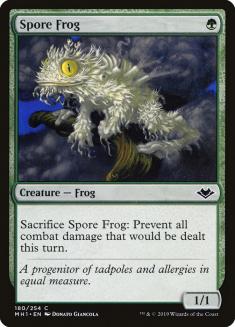
Kept:
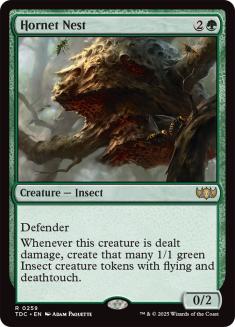
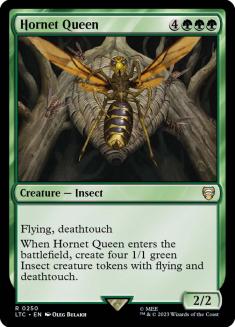
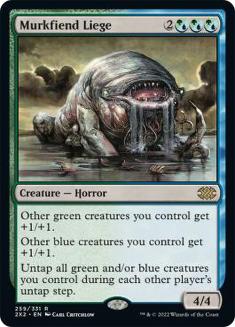
You must be expecting a bunch of Sphinx or Talrands or something, because your deck was loaded with anti-flier and anti-blue hate cards. Miscutter Hydra, for example, is a mediocre card unless you need to take out a monoblue player who doesn’t play artifacts (which will be fewer decks than ever now that Magic Origins brought us cards like Thopter Spy Network). Anyway, Shredding Winds is bad because it’s target-restricted one-for-one removal that uses damage to kill. That means it’s going to let you down. Plummet is a more reasonable card, but it’s still not where your deck wants to be. And Grounded… I’m going to be honest. This deck seems super powerful, and yet cards like Grounded make me really fascinated by the metagame you’re expecting. That card does next to nothing, but it must have been included for a reason. Who was it that hurt you?
Anyway, Grafdigger’s Cage is specifically baneful to your deck. It was when you were using Call of the Wild, and now that I’ve added Birthing Pod and Chord of Calling it’s gotten worse. In general, I would advise against playing limited hate cards like that unless you’re playing a Clock of Omens deck. Everything should have a secondary function, and this one doesn’t.
Hornet Queen does, though. It’s good on attack and on defense, and that’s a good place to be. Hornet Nest, on the other hand, not only works as a rattler, but you can use it politically by enticing a player to send a 1/1 at you for a bee, and it’s a particularly strong defense against cards like Blasphemous Act. Murkfiend Liege is a force multiplier but it’s also strong defensively, making sure that you’re never shields down.
So!
Let’s see how it looks.
Creatures (36)
- 1 Solemn Simulacrum
- 1 Mystic Snake
- 1 Fierce Empath
- 1 Sakashima the Impostor
- 1 Coiling Oracle
- 1 Loaming Shaman
- 1 Draining Whelk
- 1 Mulldrifter
- 1 Farhaven Elf
- 1 Woodfall Primus
- 1 Murkfiend Liege
- 1 Acidic Slime
- 1 Avenger of Zendikar
- 1 Ondu Giant
- 1 Sea Gate Oracle
- 1 Consecrated Sphinx
- 1 Brutalizer Exarch
- 1 Phyrexian Ingester
- 1 Edric, Spymaster of Trest
- 1 Hornet Queen
- 1 Scavenging Ooze
- 1 Sphinx of Uthuun
- 1 Craterhoof Behemoth
- 1 Fathom Mage
- 1 Diluvian Primordial
- 1 Master Biomancer
- 1 Progenitor Mimic
- 1 Nylea, God of the Hunt
- 1 Thassa, God of the Sea
- 1 Prophet of Kruphix
- 1 Burnished Hart
- 1 Kiora's Follower
- 1 Hornet Nest
- 1 Conclave Naturalists
- 1 Managorger Hydra
- 1 Woodland Bellower
Planeswalkers (5)
- 1 Garruk Wildspeaker
- 1 Garruk, Primal Hunter
- 1 Garruk, Caller of Beasts
- 1 Kiora, the Crashing Wave
- 1 Freyalise, Llanowar's Fury
Lands (37)
- 1 Strip Mine
- 11 Forest
- 1 Wasteland
- 9 Island
- 1 Tropical Island
- 1 Breeding Pool
- 1 Simic Growth Chamber
- 1 Flooded Grove
- 1 Reliquary Tower
- 1 Misty Rainforest
- 1 Oran-Rief, the Vastwood
- 1 Evolving Wilds
- 1 Command Tower
- 1 Hinterland Harbor
- 1 Simic Guildgate
- 1 Nykthos, Shrine to Nyx
- 1 Temple of Mystery
- 1 Thornwood Falls
- 1 Arcane Lighthouse
Spells (21)
- 1 Tooth and Nail
- 1 Force of Will
- 1 Sol Ring
- 1 Kodama's Reach
- 1 Gilded Lotus
- 1 Explosive Vegetation
- 1 Defense of the Heart
- 1 Chord of Calling
- 1 Krosan Grip
- 1 Rite of Replication
- 1 Cultivate
- 1 Praetor's Counsel
- 1 Birthing Pod
- 1 Creeping Renaissance
- 1 Cyclonic Rift
- 1 Mystic Genesis
- 1 Plasm Capture
- 1 Primeval Bounty
- 1 Bident of Thassa
- 1 Bow of Nylea
- 1 Elemental Bond

I like this take on the deck, although my biases are clear. It should still be competitive with the more powerful decks, but it doesn’t have a ton of klaxons to alert your opponents to your eventual victory. They’ll do splashy plays that draw a ton of attention while you get to hold back, draw cards, and generally hold position until your card and mana advantage have you ready to mop up after your opponents have bloodied one another.
That’s the ideal fight plan, no?
The Price
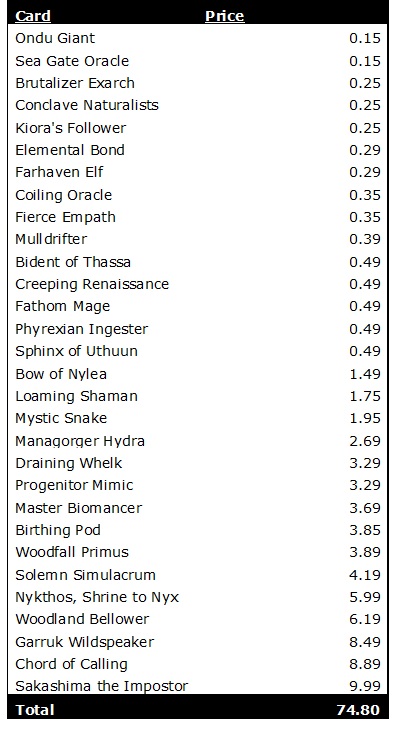
With no specified budget and with Tropical Island, Misty Rainforest, Force of Will, and Wasteland all in the mix, I decided to just ignore the budget completely. That it ended up so close to a round number is just happenstance. That the round number is below $100 speaks to my build style, I suppose. Still, that $75 should be within budget given the power cards you’re already running, and it’s helped by the $20 store credit you’ll receive as a submitter to Dear Azami. Remember, we’re always accepting submissions!
One final note about programming: you may have noticed a couple of holes in the Dear Azami coverage lately. Our apologies. I’m sure Cassidy will say more about it when he comes back August 18th, but let’s be honest… life intrudes on Magic from time to time. When it does, the best thing to hear is the support of your friends and community.
Let’s give him that.
Want to submit a deck for consideration to Dear Azami? We’re always accepting deck submissions to consider for use in a future article. Only one deck submission will be chosen per article, but being selected for the next edition of Dear Azami includes not just deck advice but also a $20 coupon to StarCityGames.com!
Email us a deck submission using this link here!
Like what you’ve seen? Feel free to explore more of Dear Azami here, in the Article Archives! And feel free to check Jess’s own Command of Etiquette column on Hipsters of the Coast, for more Commander and casual content. Now on Thursdays!

